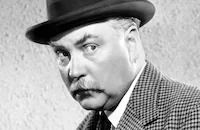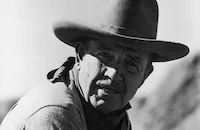Based on Rachel Crothers' satirical play, Susan and God (1940) treats religion as just one in a series of fads or styles in superficial Susan's life. Claiming that she merely wants to help her friends, Susan has soon wrecked two relationships, including the only recently sealed union between wealthy Hutchins Stubbs (Nigel Bruce) and his gorgeous young wife Leonora
(Rita Hayworth), and is working on adding her own dissolving marriage to Barry Trexel (Fredric March) to the scrap heap.
Playing the role of a spoiled heiress with irresistible panache, Joan Crawford's performance is greatly enhanced by the exquisite costumes created for Susan by legendary MGM chief costume designer Adrian who also designed memorable ensembles for other divas in the MGM stable including Greta Garbo, Norma Shearer and Jean Harlow. Adrian's typically bold silhouettes and patterns give an early indication that Susan's religious conversion is not altogether sincere, but more the spiritual dilettantism of a bored fashion plate. Adrian is credited with innovating the
broad-shouldered, waist-slimming look that became Crawford's signature style, and his screen collaboration with Crawford on 28 films surely helped cement her reputation as a notorious Hollywood clothes horse.
Adapted for the screen by Anita Loos (Gentlemen Prefer Blondes (1953), The Women, 1939) who some claimed greatly improved upon the original play, Susan and God is an often penetrating, humorous indictment of spiritual fads and religious self-righteousness. Crothers' play was reportedly inspired by a real-life religious movement of the day, Dr. Frank Buchanan 's Oxford Group of the 1930s (which also inspired the
creators of Alcoholics Anonymous). Like the Susan Trexel character in Susan and God Buchanan experienced a spiritual epiphany while visiting England, which would alter the course of his life and lead him to develop a faith based on confession of sins and conversion of others to the spiritual path. Buchanan's message of "Moral Re-Armament" and belief that personal change could lead to social change led him to speak out against the prewar military build-up in the late 1930s and landed him on the cover of Time magazine.
Ironically enough, Joan Crawford underwent a religious conversion of her own in the 1930s, to Christian Science, and reportedly consulted her practitionist almost daily for 25 years. But Crawford abided by a strict personal policy of never speaking openly about religion or politics, and kept her Christian Science views under wraps.
Susan and God signaled an important career transition for Joan Crawford, from a sex symbol in early films like Our Dancing Daughters (1928) and Mannequin (1937) to a mature, seasoned actress who later earned an Academy Award in 1945 for her portrait of an emotionally divided mother in Mildred Pierce (1945). Anxious to prove her abilities in Hollywood, Crawford accepted the role of Susan Trexel when her arch rival Norma Shearer, (often awarded the plum MGM roles denied Crawford, because Shearer was married to MGM head producer Irving Thalberg) turned the part down because she didn't want to play the mother of a teenage daughter onscreen.
Susan and God, like Crawford's previous film The Women, cast her as an unlikable character. While this was a welcome acting challenge for Crawford, it was more problematic for Adrian whose previous costume designs for the actress greatly influenced the fashion industry. In Gowns by Adrian: The MGM Years 1928-1941 (Abrams) by Howard Gutner, the author elaborates: "The advertising tag line for the filmÖindicated how successful Crawford's stab at devising a new image had been, and also served to vindicate Louis B. Mayer's worst fears: "Joan's a gorgeous meanie again!" This was not the ideal image to sell fashion. The dark side that began to emerge in Crawford's characters after The Women necessarily affected any fashion influence they could have had. Audiences could be entertained by Joan Crawford as vain, silly Susan Trexel, but that didn't necessarily mean they wanted to be Susan. So why would they want to dress like her?" From this point on, Crawford's career at MGM went into a sharp decline in popularity and she was released from the studio in 1943.
Director: George Cukor
Producer: Hunt Stromberg
Screenplay: Anita Loos based on the play by Rachel Crothers
Cinematography: Robert Planck
Production Design: Cedric Gibbons
Music: Herbert Stothart
Cast: Joan Crawford (Susan Trexel), Fredric March (Barry Trexel), Ruth Hussey (Charlotte), John Carroll (Clyde Rochester), Rita Hayworth (Leonora Stubbs), Nigel Bruce (Hutchins Stubbs), Bruce Cabot (Michael O'Hara), Rose Hobart (Irene), Rita Quigley (Blossom Trexel).
BW-118. Closed captioning.
by Felicia Feaster

































